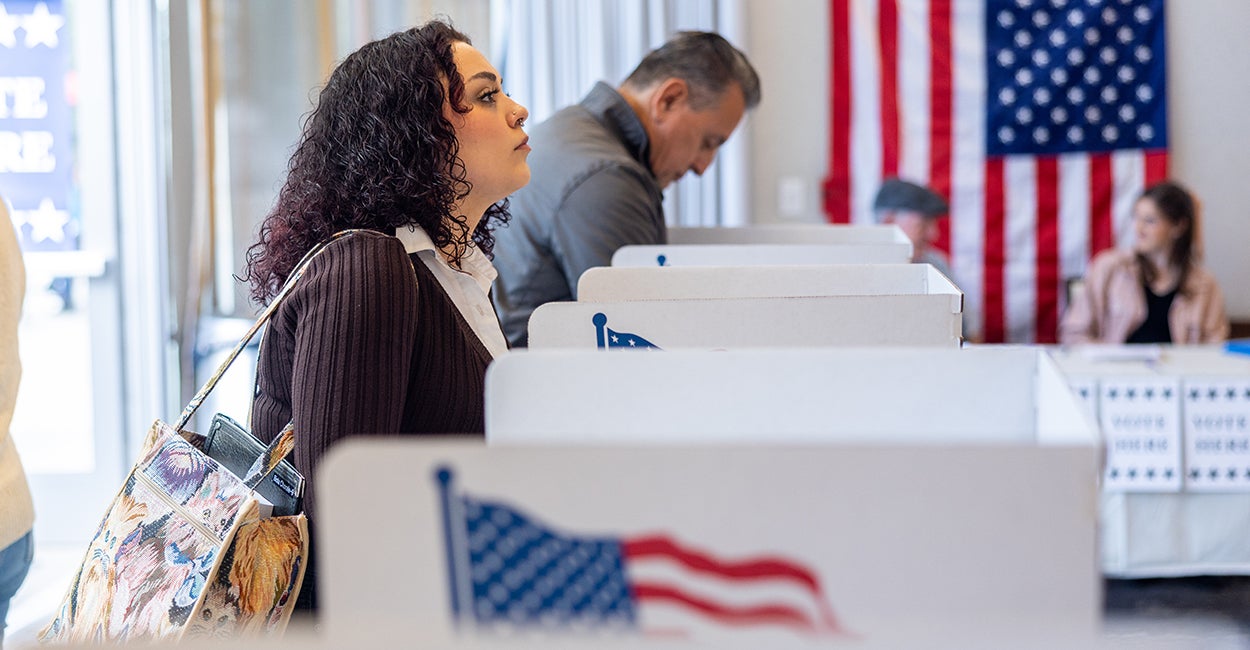
This article was originally published on Daily Signal - Society. You can read the original article HERE

Abortion was on the ballot Tuesday in more ways than one. Nationally, Kamala Harris’ campaign increasingly emphasized the issue, claiming that electing Donald Trump again would lead to a “national abortion ban.”
And voters in 10 states had the opportunity to amend their state constitutions to protect a right to abortion. Here are the results.
The Harris campaign’s claims were demonstrably false. Trump repeatedly said he would veto a national abortion ban if Congress ever passed one.
House Democratic Leader Hakeem Jeffries, D-N.Y., claimed that Project 2025’s set of policy proposals called for a national abortion ban even though the 920-page volume says nothing about it.
Abortion took center stage as a long line of celebrities endorsed Harris.
Trump’s victory, winning a higher percentage of the popular vote than in 2020 or 2016, showed that this strategy failed.
The picture is different at the state level, where the abortion issue itself was on the ballot. In Roe v. Wade, the U.S. Supreme Court in 1973 invented a right to abortion that prevented states from enacting virtually any law to protect the unborn.
Over the next few decades, 12 state courts interpreted existing provisions in their constitutions to protect that right. And then the Supreme Court overruled Roe in 2022, leaving state charters as the only source of constitutional protection.
In the 2022 election, voters in California, Michigan, and Vermont added language to their state constitutions protecting a broad right to “reproductive freedom.” That step was cosmetic in California and Vermont, where the two states’ supreme courts had already interpreted the constitution to protect this right.
But it was a dramatic change in Michigan, where the new language covered a vague category of “decisions about all matters related to pregnancy.” Ohio voters adopted a similar constitutional amendment in 2023.
Which brings us to the 2024 ballot. Even if the line for prohibiting abortion remains the same, voters drawing that line in their state constitution makes a more significant statement than legislators doing so in a statute.
With that in mind, voters in six states were asked whether their state constitution should prohibit any limitation on abortion before “viability” or, even after viability, when necessary to protect the mother’s life or health. The measure passed in five of those states: Arizona, Colorado, Missouri, Montana, and Nevada.
Viability is a subjective term that designates when an unborn child can survive outside of the womb; generally, it’s considered to be at about 24 weeks. Data from the Centers for Disease Control and Prevention show that 99% of abortions occur before viability.
Colorado, Montana, and Nevada already had drawn a legislative line at viability; Arizona had done so at 15 weeks. Although moving the line for permissible abortions from 15 weeks to viability might appear significant, the CDC data show that a 15-week ban still allows 94% of abortions.
The most dramatic change occurred in Missouri, which legislatively bans abortion from conception. A slim majority of voters (52%) approved amending the state Constitution to remove this ban and allow abortions up to viability.
In Florida, 57% of voters supported Amendment 4, which also would have prohibited any abortion limitations before viability. Florida, however, is one of the few states that requires 60% of voters to amend their constitution. The measure would have passed under a simple majority threshold, a dramatic change from the current six-week legislative ban.
Maryland currently has no gestational limit on abortion and, therefore, voters adopting a constitutional provision protecting “reproductive freedom” didn’t change the overall legality of abortion there. Similarly, New York voters adopted a broad constitutional provision protecting women from unequal treatment based on “reproductive health care and autonomy.” This shift effectively legalizes 100% rather than 99% of abortions in New York state.
Voters in Nebraska approved a ballot measure that will allow abortion only in the first trimester, but Nebraska already allows first-trimester abortions. Nebraskans rejected a separate proposal to protect “a fundamental right to abortion until fetal viability.”
The margin for both ballot measures, however, was narrow: 55% voted to restrict abortion to the first trimester but 49% voted to allow the 99% of abortions that occur before viability.
Finally, 60% of South Dakota voters rejected adding protection for abortion to the state Constitution. This proposal would have established different standards for restrictions on abortion during different periods of pregnancy, a complicated approach that the Supreme Court had imposed in Roe v. Wade but abandoned because it is unworkable.
These results for the state ballot measures give abortion advocates cause to celebrate. The percentage of voters supporting the measure on Election Day, for example, exceeded preelection polling by four percentage points in Arizona, five points in Nebraska, six points in Colorado, and 11 points in Florida. The result matched polling in Maryland and Missouri.
Even in Montana, where polling overestimated support, voters still approved the abortion measure. And even in states with pro-life legislatures, such as Missouri and Nebraska, voters chose to protect the right to abortion during all or part of pregnancy in the constitution, the state’s fundamental law.
The pro-life movement always has known that its goal must be to achieve a life-affirming culture. These results show how much work still needs to be done.
This article was originally published by Daily Signal - Society. We only curate news from sources that align with the core values of our intended conservative audience. If you like the news you read here we encourage you to utilize the original sources for even more great news and opinions you can trust!










Comments